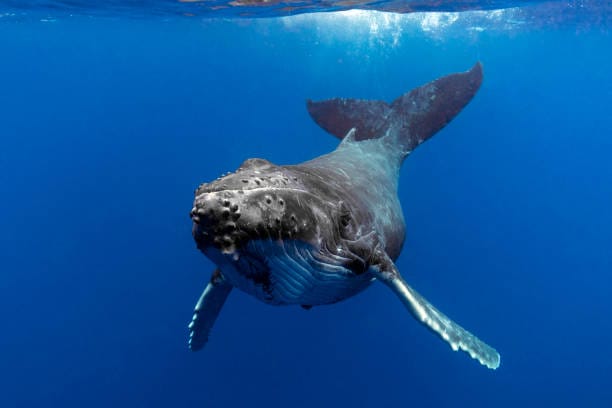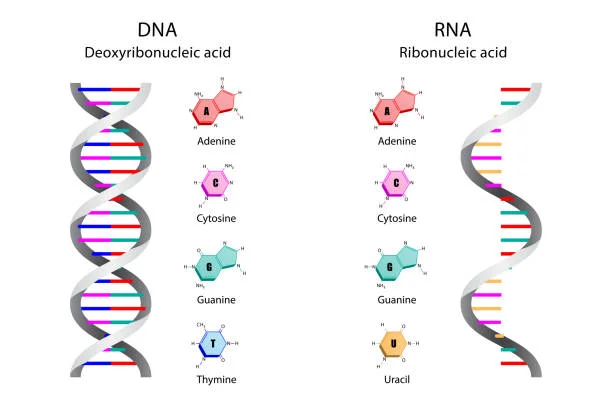In the vast, silent oceans, where the water stretches endlessly and the horizon is swallowed by the curve of the Earth, something extraordinary occurs beneath the surface. Deep in the dark blue waters, a solitary creature, a whale, hums an eerie, beautiful song—yet its melody is unlike any other of its kind. This whale, known only to scientists as A or the “isolated whale,” sings at a frequency that doesn’t match any of its kin.
Imagine the vastness of the ocean—an expanse that covers over 70% of our planet’s surface, brimming with mysteries, many of which have yet to be uncovered. And in the midst of this boundless sea, this one whale swims, singing its lonely song at a frequency that seems out of place, a frequency so unique that it sets it apart from all other known whales. It’s as if this whale has wandered far from its family, or perhaps, it was born with a gift or curse that makes it different.
This whale, often described as an enigma, has baffled scientists, marine biologists, and whale watchers alike. The deeper you dive into its story, the more fascinating and poignant it becomes. It’s not just about the whale’s song, but what that song means and how it reflects the complexities of life in the ocean.
The Mysterious Frequency
To understand why this whale is so unique, we need to first explore the nature of whale songs. Most whales, especially the humpback whales, are famous for their long, intricate songs, which they sing during the breeding season. These songs, rich with complex rhythms and frequencies, are not merely the echo of the whale’s existence but a form of communication—most often between males seeking mates. In fact, humpback whale songs have been known to travel across vast distances, sometimes hundreds of miles. They communicate not just through their physical presence but through their sound.
Whales sing at very specific frequencies, usually in a well-defined range that varies from species to species. For example, humpbacks typically sing between 15 and 20 Hz, and other species like blue whales or fin whales produce frequencies that are similarly within this general band. This allows whales to communicate clearly with each other, even over great distances in the murky depths of the ocean.
But whale A—the lone wanderer—sings at an entirely different pitch. It produces sounds at 52 Hz, which is a much higher frequency than the typical low-frequency songs of other whales. This is a dramatic outlier and the reason why it stands out: it sings at a frequency where no other known whale species communicates.
The first recordings of this strange frequency were captured in 1989 by a team of scientists using hydrophones. It wasn’t long before they realized that this whale wasn’t simply singing out of tune—it was singing a song that no other whale was hearing, and perhaps, it wasn’t hearing the songs of others either. The frequency is so distinctive, it has become the hallmark of this lonely whale. A frequency that, in the vast ocean of sound, isolates it from the rest of its species.
Scientists were left grappling with this anomaly. Why would a whale sing at such a frequency? Was it a genetic mutation, a physical anomaly, or the result of an environmental factor? And most poignantly—why was it alone?
The Lone Wanderer
The story of whale A is not just one of a curious anomaly in frequency; it is also a story of solitude. While humpback whales often travel in pods, migrating in groups over thousands of miles across the oceans, whale A seems to swim alone. This solitary whale has been observed moving through the Pacific Ocean, its song echoing in the vastness. It doesn’t have the companionship of a pod, nor the community that many whales rely on for social interaction, communication, and cooperation.
Whales are social creatures, and their communities often provide them with safety, support, and opportunities to share knowledge. The absence of a pod might suggest that whale A has either been separated from its group or was born alone—something that remains a mystery to this day. What is known, however, is that the whale’s social isolation makes it even more fascinating. It’s as if this whale’s very existence questions the fundamental nature of social bonds in the animal kingdom. Does this whale yearn for companionship? Can it understand the importance of being part of a larger group? The scientific community hasn’t been able to answer these questions yet.
But what is even more striking is the emotional resonance of whale A’s situation. Imagine a creature, capable of producing such hauntingly beautiful sounds, yet unable to share those sounds with anyone else. It’s a reminder of the ways in which loneliness can be both profound and inescapable, even in the vastness of the ocean, even for one of the most intelligent creatures on the planet.
Is It an Anomaly?
What makes whale A’s situation even more interesting is the question of whether it is truly an anomaly. In nature, the idea of being “different” or an outlier isn’t always as simple as it sounds. The world is full of creatures that don’t quite fit into the molds we expect. Is this whale a rare, one-off genetic accident, or is it something more? There have been theories and speculations, some even suggesting that whale A could represent a new species entirely. While this is unlikely, given the scientific understanding of whale genetics, it remains a tantalizing idea.
Some researchers have suggested that the whale’s frequency could be the result of a developmental abnormality, perhaps a mutation in its vocal cords or its brain. Theories have been proposed about changes in its environment—perhaps pollution, noise interference, or even physical injury—that could have affected the whale’s ability to produce sound at the normal frequency. After all, the ocean is becoming an increasingly noisy place, with ships, sonar, and industrial activities filling the waters with human-made sound. Could whale A’s songs be a response to this cacophony, an attempt to be heard in a world of overwhelming noise?
Despite the scientific curiosity surrounding its song, whale A has not been heard to communicate with other whales. It’s as if its frequency places it in a completely different sonic world. The vast majority of whales in the ocean communicate at much lower frequencies, and as a result, whale A’s song is essentially a solitary hum—echoing through the water but falling on deaf ears.
The Science Behind the Song
To truly understand whale A’s strange frequency, we must take a closer look at how whales produce sound. Whales create sounds using specialized structures in their heads called “phonic lips.” These are akin to vocal cords in humans and are located in the whale’s blowhole area. The sound is created when air passes through these lips, vibrating and producing low-frequency calls that can travel across long distances.
These sounds are then modified by the whale’s sinuses and head cavities to create various tones, from simple clicks to complex songs. The frequency at which these sounds are produced is determined by a variety of factors, including the whale’s size, age, and even health.
For whale A, the high-pitched frequency at 52 Hz is distinct, and scientists believe it could be due to a variety of factors, including anatomical variations in its phonic lips or a neurological difference in how it processes sound. No definitive answer has been reached, but one thing remains certain: the whale is an outlier in the world of whale communication.
Interestingly, the 52 Hz frequency has also been likened to the concept of humans who feel like they don’t belong. The metaphor resonates with the idea of the whale being a voice in the wilderness, not heard by its kind, an echo in the vast oceanic silence.
The Search for Connection
What makes the story of whale A even more heartbreaking is the possibility that this whale might never find another of its kind. Unlike some other species that have been known to adapt to changes in their environments or social structures, the isolated whale’s unique song could be a tragic barrier between it and the rest of the whale population. It’s a metaphor for loneliness that transcends species, a poignant reminder of how isolation can affect even the most majestic creatures.
This whale might swim the oceans for years, singing its song at the wrong frequency, forever out of reach of other whales. But does that make it less meaningful? Perhaps not. Perhaps whale A’s song is not just a lonely cry but a symbol of resilience—a sound that rises above the limitations of its environment, one that carries its essence in each note. It’s an enduring reminder that even in the silence of isolation, there is still music to be heard.
Hope for the Future?
Despite its lonely journey, there is hope. Scientists have begun to monitor whale A’s travels more closely, with an increasing number of research expeditions and whale listening stations set up to track its movements. In time, perhaps the right circumstances will lead this lone whale to a pod, or perhaps it will find other whales that sing at the same frequency. There are rare instances where whales of different species have been found interacting, although this is extremely uncommon. Maybe there is a chance, however small, that whale A will not swim alone forever.
For now, though, whale A remains one of the ocean’s greatest mysteries—a creature whose song both captivates and mourns. In a world where communication is everything, this lonely whale has proven that even when no one can hear your song, it is still worth singing.






